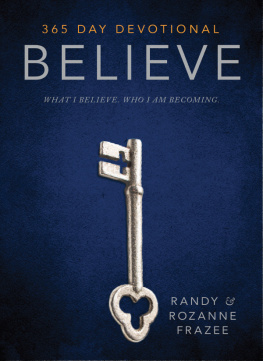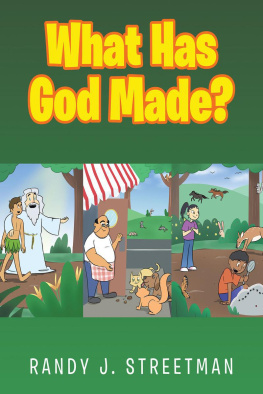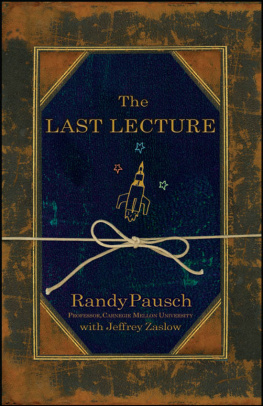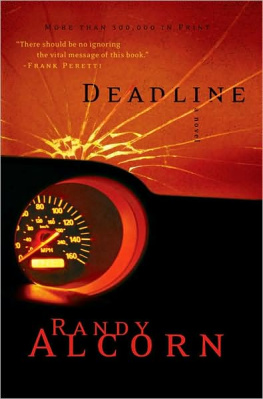Randy Ingermanso - How to Write a Dynamic Scene by Randy Ingermanson
Here you can read online Randy Ingermanso - How to Write a Dynamic Scene by Randy Ingermanson full text of the book (entire story) in english for free. Download pdf and epub, get meaning, cover and reviews about this ebook. year: 0, genre: Art. Description of the work, (preface) as well as reviews are available. Best literature library LitArk.com created for fans of good reading and offers a wide selection of genres:
Romance novel
Science fiction
Adventure
Detective
Science
History
Home and family
Prose
Art
Politics
Computer
Non-fiction
Religion
Business
Children
Humor
Choose a favorite category and find really read worthwhile books. Enjoy immersion in the world of imagination, feel the emotions of the characters or learn something new for yourself, make an fascinating discovery.
- Book:How to Write a Dynamic Scene by Randy Ingermanson
- Author:
- Genre:
- Year:0
- Rating:4 / 5
- Favourites:Add to favourites
- Your mark:
- 80
- 1
- 2
- 3
- 4
- 5
How to Write a Dynamic Scene by Randy Ingermanson: summary, description and annotation
We offer to read an annotation, description, summary or preface (depends on what the author of the book "How to Write a Dynamic Scene by Randy Ingermanson" wrote himself). If you haven't found the necessary information about the book — write in the comments, we will try to find it.
How to Write a Dynamic Scene by Randy Ingermanson — read online for free the complete book (whole text) full work
Below is the text of the book, divided by pages. System saving the place of the last page read, allows you to conveniently read the book "How to Write a Dynamic Scene by Randy Ingermanson" online for free, without having to search again every time where you left off. Put a bookmark, and you can go to the page where you finished reading at any time.
Font size:
Interval:
Bookmark:
I.
II.
III.
IV.
Do you want to write a dynamite novel?
I bet you do.
And I bet you can.
Im here to teach you how.
Why do I think I can do that?
Because Ive been teaching people how to write fiction for a long time.
Im Randy Ingermanson, and writers all around the world know me as the Snowflake Guy in honor of my wildly popular Snowflake Method of designing a novel before you write it.
Ive got a page on my website explaining the Snowflake Method. That page has been viewed more than six million times (as of January 2018). And Ive published a best-selling book titled How to Write a Novel Using the Snowflake Method.
Tens of thousands of writers around the world are using the Snowflake Method right now to write their novels.
The Snowflake Method is just a series of ten steps you can use to design your novel so you can get the first draft down on paper. People e-mail me all the time to say these steps work like magic to unlock their creativity.
Please note: the Snowflake Method doesnt make you more creative.
Because you already are creative.
The Snowflake Method just tells you what task to be creative on next.
You dont have to use all ten steps of the Snowflake Method.
You can use any steps you like.
You can ignore any steps you dont like.
The ninth step in the Snowflake Method is to design each scene before you write it.
Why do scenes matter? Because the key to writing a dynamite novel is to write a dynamite scene.
When I first started writing fiction, my scenes just werent working. Then I discovered Dwight Swains classic book, Techniques of the Selling Writer. That book had a couple of chapters that changed my life. They taught me how to write a powerful scene.
If you can write one powerful scene, you can write a hundred. And thats a novel.
Ive been teaching at writing conferences for many years, and Ive critiqued manuscripts for hundreds of writers.
The #1 weakness Ive found in beginning and intermediate writers is that they dont write strong scenes.
The absolute fastest way for most writers to take a quantum leap forward is to learn how to design strong scenes.
Dynamite scenes.
In this book, Ill teach you how. This is a short book, focused on just that one topic. You can blitz through it quickly and master scene design. You can.
As I said, I first learned how to design scenes from Dwight Swains book, Techniques of the Selling Writer. Ive now spent decades mulling his methods, rethinking everything, trying to simplify, and adding new ideas. This book is one result of those decades of work.
My one goal in writing this book is to teach you how to become an expert in designing powerful, amazing scenes that will move your readers emotions.
Once you master scenes, youll be one giant step closer to writing powerful, amazing novels that will move readers emotions.
Lets do this, shall we?
Turn the page to get started.
Y our reader desperately wants one thing.
You have it in your power to give your reader that one thing.
And what is that one thing?
I could tell you what that one thing is, and you would nod and agree that yes, that one thing is clearly something all readers want.
But telling you that one thing wouldnt make it stick in your mind forever.
I want it to stick.
Id rather show you that one thing. Once youve seen it, once youve lived it, youll never forget it. That one thing will be inside you, fueling everything you write.
So let me tell you a quick story about one of our ancestors who lived many thousands of years ago in a small village on this planet we call home.
When I say hes our ancestor, I mean it literallyhes your ancestor and hes my ancestor and hes every humans ancestor.
That ancestor of ours was once a thirteen-year-old boy, the newest man in the village, and the smallest.
Imagine youre that boy on the day when word comes to the village that theres a killer tiger ravaging the villages herd of goats.
Youre furious. A drought has been burning the land for many months. That herd of goats is all that keeps your village from starvation.
Youre also terrified. Theres only one way to get rid of a killer tiger. The village has to organize a hunt, find the tiger, and kill it. But that wont be easy, because theres nothing more dangerous in your world than a killer tiger.
The village headman sends word around to the whole village. All men meet in the village square, and bring your spear.
When the messenger comes to your hut, he shakes his head and frowns. He thinks youre too young to go.
In your heart, youre afraid hes right. You only just became a man in the last month. Youre small. Youre skinny. Youre weak.
But in your head, you know hes wrong.
If the village doesnt kill the tiger, its going to steal every last goat, and the village is going to die.
To save your people, you and every man in the village have to work together to kill the tiger.
You know very well you might not come back. A thousand times in the village square, youve heard the village story-woman tell the Tale of the Tiger. You know that when a tiger is surrounded by men with spears, it always looks for the weakest manand attacks that man.
Sometimes the man kills the tiger.
Sometimes the tiger kills the man.
Youre terrified, but you know you have to go.
You grab your spear and run to the village square.
When you get there, the village headman smiles at you and shouts courage on you.
All the villagers smile at you and shout courage on you.
And then the men of the village set out to find the tiger.
You dont have to go far. You can hear the screams of a baby goat being dragged into the jungle. You can hear the roar of the tiger.
Every man of the village knows what he has to do. The Tale of the Tiger is in your blood.
You all fan out, forming a giant circle around the place where you heard the tiger.
The headman shouts the command to move, and you all advance ten paces.
He shouts again, and you advance ten paces.
Over and over and over again.
As you get closer to the tiger, the tightness in your chest squeezes your heart until the pain is unbearable.
The headman shouts, and you advance ten paces.
Sweat rains down your face.
The headman shouts, and you advance ten paces.
Your knees are shaking so hard, you think youre going to fall over.
The headman shouts, and you advance ten paces.
Finally, a war-shout goes up from all the men.
A hundred fingers point at a streak of orange and black, high up.
The tiger is in a tree, watching you with yellow eyes of rage.
Hes trapped, fifty paces from where you stand. You can see him looking all around the circle, measuring his enemies. Its exactly like you imagined from every time youve ever heard the Tale of the Tiger. Exactly like itonly worse.
The headman shouts, and you advance ten paces.
The tiger roarsso loud you can feel the sound shaking your belly.
Hes forty paces away. And hes looking directly at you.
Font size:
Interval:
Bookmark:
Similar books «How to Write a Dynamic Scene by Randy Ingermanson»
Look at similar books to How to Write a Dynamic Scene by Randy Ingermanson. We have selected literature similar in name and meaning in the hope of providing readers with more options to find new, interesting, not yet read works.
Discussion, reviews of the book How to Write a Dynamic Scene by Randy Ingermanson and just readers' own opinions. Leave your comments, write what you think about the work, its meaning or the main characters. Specify what exactly you liked and what you didn't like, and why you think so.











